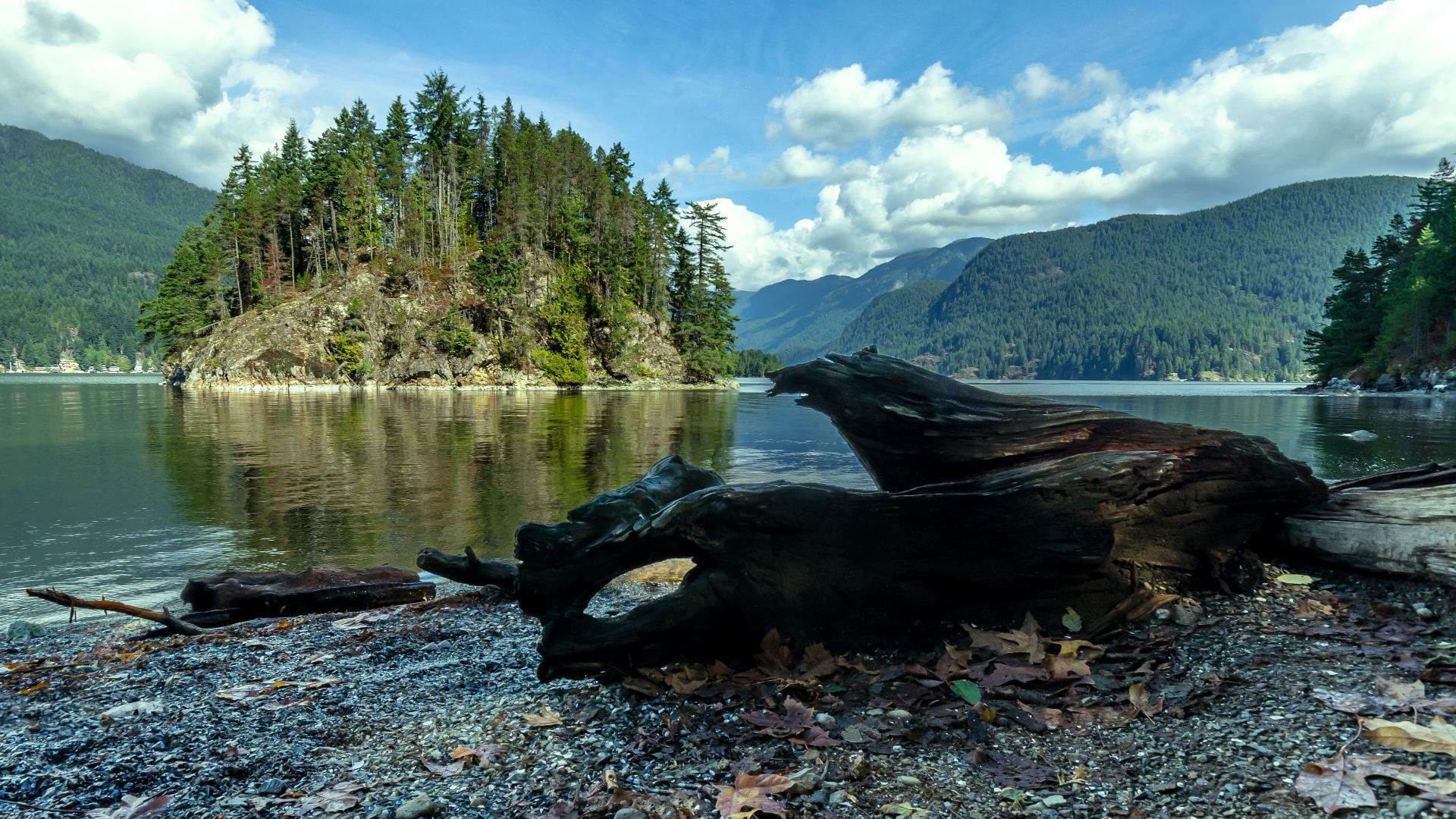Rivers and estuaries snake between green mountains speckled with trees, leading out to the ocean inlet around North Vancouver in British Columbia, Canada. Salmon fight to swim upstream in freshwater. Once they ran in great abundance. Fish still jump and gleam in these rivers, but chum salmon in British Columbia have been facing major population declines. Their numbers have decreased as much as ∼90% since 1960 along the central coast.
Many Central Coast First Nations have been raising the alarm about the vulnerability and declining status of chum salmon populations for years. Despite being a key species for the ecosystem and economy of British Columbia, the collapse of chum salmon populations could be linked to mismanagement by the government organization in charge of fisheries management, Fisheries and Oceans Canada (DFO).
Further south along the coast, researchers from the University of British Columbia and the Tsleil-Waututh Nation have confirmed that the Tsleil-Waututh people had maintained the stewardship of a sustainable chum salmon fishery for thousands of years before colonization. In a new study, archaeological analysis of salmon bones in collaboration with the scientists and members of the Tsleil-Waututh Nation has resulted in a new hope for the management of chum salmon in British Columbia.

Jug Island Beach, located in Belcarra Regional Park along the most northern tip of the park. // Credit: Jerry Meaden, Flickr
This study focuses on the remains of salmon found at təmtəmíxʷtən (Tum-tumay-whueton), a large and culturally important site for Coastal Salish communities, where researchers over many years have pieced together an archaeological record of activity and stewardship by the Tsleil-Waututh people. Unearthing over 200 salmon vertebrae gave researchers the ability to look into the past using DNA testing and identify the species and sex of salmon the Tsleil-Waututh people preferentially fished for. The archaeological record goes back around 3000 years, establishing a long-lived and plentiful fishery. Within these bones, researchers were able to create a profile for a strong relationship between the people whose traditional, ancestral, and contemporary unceded territory is known presently as Belcarra Regional Park.
With European contact in 1792, colonists began to focus on the rapid extraction of resources and quickly developed the region’s resources, stripping ecosystems for power and financial gain. European settlements in the studied area grew into what is now known as Vancouver, the largest and most productive port in Canada. Development drastically changed the coastal region, decreasing the abundance of wildlife and greatly hindering the Coastal Salish communities’ way of life.
Previous narratives around Indigenous and Coastal Salish nations were centered around the idea that these communities did not manage or cultivate the environment around them, characterizing communities as complex hunter-gatherers. This played into the falsehood that the land and waters of the inlet ecosystem, now known as Burrard Inlet, were “untouched” and open to being colonized by European settlers. Combined with oral histories and traditional knowledge of the Tsleil-Waututh Nation, archaeologists now can reaffirm the importance of salmon to indigenous peoples and in turn reaffirm the importance of their stewardship that sustained salmon fisheries for millenia.

Chum salmon in spawning colors. // Credit: David Csepp, NMFS/AKFSC/ABL. NOAA Photo Library.
Over the course of around 3,000 years, the Tsleil-Waututh Nation’s fishery was stable and sustainable. Where other populations would have shown a drop in salmon abundance with shifts of human population or continued overfishing, the consistent abundance of chum salmon remains found at təmtəmíxʷtən over the period investigated reflected a stable fishery. The Tsleil-Waututh people selectively fished male chum salmon during spawning months, which are easily recognizable by their drastic change in color when sexually mature. Males change from a silvery color to dark green, striped with reddish purple waves. This sex-specific harvest pattern contributed to the resilience and abundance of chum salmon populations.
By primarily fishing for salmon during spawning season, the Tsleil-Waututh people could easily select male salmon. This practice was beneficial to the overall salmon population for thousands of years. In modern fisheries management, sex-selective harvest can allow for females of the species to remain in larger population numbers and reproduce while still allowing fishing of a species. Current practices of commercial and recreational fishing focusing solely on catch limits have been devastating to the salmon population in the Burrard Inlet; sex-selective fishing practices could revitalize the chum salmon fishery in these waters.
Salmon on the Pacific Northwest Coast face many problems, from climate change to development and over fishing. As shown in this study, the Tsleil-Waututh people sustainably managed the chum salmon fishery for thousands of years. The sustainability of fisheries should not be managed by the colonial practices of over-consumption that continue to weaken them; adherence to the practices of the Tsleil-Waututh Nation, their ancestors, and other First Nations is the first step to reduce population decline of chum salmon and return a vital food source back to its former glory.